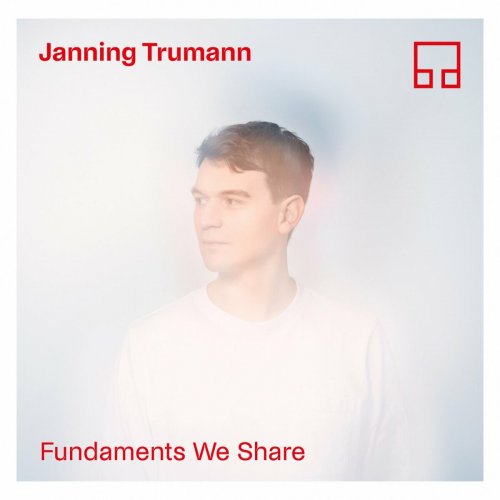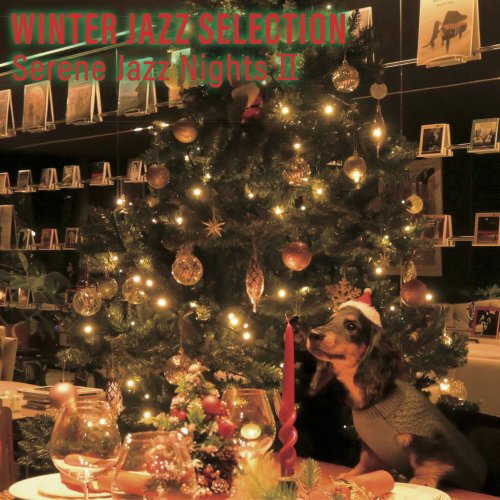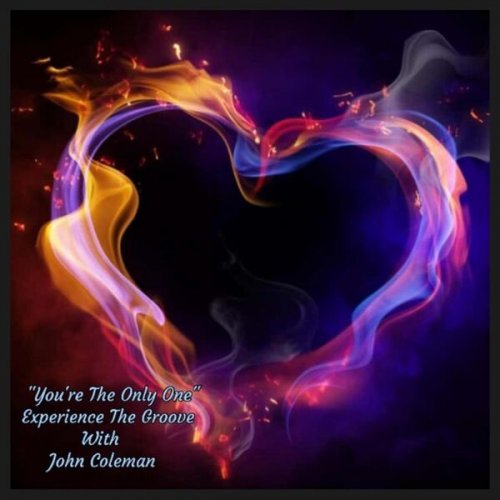Janning Trumann - Fundaments We Share (2023)

Artist: Janning Trumann
Title: Fundaments We Share
Year Of Release: 2023
Label: Tangible Music
Genre: Jazz
Quality: FLAC (tracks)
Total Time: 36:17 min
Total Size: 168 MB
WebSite: Album Preview
Tracklist:Title: Fundaments We Share
Year Of Release: 2023
Label: Tangible Music
Genre: Jazz
Quality: FLAC (tracks)
Total Time: 36:17 min
Total Size: 168 MB
WebSite: Album Preview
01. Calm
02. Fly
03. Choral
04. Melody
05. Notes
06. Layer
07. Repeti
Two become one! The Cologne composer, bandleader and trombonist Janning Trumann has combined two independent suites, which were created in very different situations, into a double album, and with good reason. Because in addition to the profundity and complexity of his music, the two pieces are linked by the scoring of the octet.
The suite "Wem Zeit wie Eternity" dedicated to the German Expressionist sculptor Ernst Barlach was recorded in 2019 and has since been performed five times. Trumann has left the recordings alone for now. The recording of "Fundaments We Share" three years later offered the welcome opportunity to publish both pieces, which are quite different in their structure, as a complementary double suite. The two works complement and complete each other so perfectly, above all, because each is so fundamental in itself. There isn't a main work or an accessory, nor are there any instructions as to which of the two records you should listen to first, as they aren't numbered. This music is neither jazz nor classical and also does not follow the programmatic dictates of the Third Stream. The trombonist has long established the coordinates of his very own poetic canon of values, within which he has located the two recordings in diagonal corners. Although they arise from different needs, they access the same vocabulary.
Janning Trumann's music has always been characterized by warmth and precision. No matter what constellation he appears in, one only needs to hear a few notes from him to identify his sound, just as one needs only a few lines from Rilke or a few brushstrokes from Modigliani to recognize those artists. However, the octet is a special body of sound. Bigger than a combo and smaller than a big band, it combines the advantages of both constellations. The specific occupations of Janning Trumann 8 have primarily personal and autobiographical reasons. He himself calls it a logical consequence of his previous artistic life. “I founded the ensemble in 2019. There are many musical personalities involved with whom I have been working for a long time. My background also plays a part. Charlotte Greve's aunt, for example, confirmed me at the very church we received. Charlotte and I played in this church several times as teenagers.” This is just one of many very personal stories that made him think of colleagues like Charlotte Greve, Tini Thomsen and Uli Kempendorff (or Fabian Willmann and Theresia Philips for Greve and Thomsen) on the saxophones, trumpeter and flugelhorn player Heidi Bayer, organist Sebastian Scobel, vibraphonist Dierk Peters or bassist Stefan Schönegg. For all of the above, the path they have traveled together is at least as important to Trumann as their respective musical voices.
Ultimately, this ensemble works like a sound paint box, in which each voice is a color that Trumann can mix at will on his palette to create his own unique moods. "I still composed a great deal for the Barlach Suite and worked out every detail," the magician of timbres recalls. “We had a lot of time to rehearse and get to know each other. I didn't know how much freedom I could give the troops. For the foundation plate I only wrote sketches. So I gave the musicians the freedom to just play and see what happens. We just rehearsed and experimented a bit, and then we started recording, from which we recorded different takes. It actually works like a sound paint box from which I can freely choose my colors.”
Janning Trumann has a special connection to Ernst Barlach. He has performed several times in the Antoniterkirche in Cologne, where the original copy of Barlach's floating angel, which was melted down by the Nazis and bears the facial features of Käthe Kollwitz, hangs. The title of the Barlach suite refers to the lithograph "For whom time is like eternity", which is based on a quote by the philosopher Jakob Böhme (For whom time is like eternity and eternity like time, he is freed from all suffering.). Trumann thought long and hard about this quote and began to study the sculptor's work more intensively. But how do you translate Barlach into music? "Barlach's sculptures are all very round," notes the trombonist. “There isn't much angular about him. Faces are kept very simple with him. This simple and soft formality was also important to me. I cast everything in forms that seem a little structural motifs, and I asked myself, on what basis does he keep building, what makes his handwriting, his motifs, his recognition value.” From the outset, Trumann has a very well-rounded tone, which is good suits Barlach. Another thing the trombonist and the sculptor have in common is that the latter worked in metal and, with the exception of the double bass, Trumann mainly uses warm-sounding metal in his suite – not to say makes it float.
"Fundaments We Share" is in many ways the antithesis of "Who time is like eternity". Times had changed after the lockdown, and the Barlach Suite had accompanied Trumann for so long that he wanted to take the octet in a completely different direction once again. "The ensemble has always played composed music," the bandleader sums up, "but I had members like Stefan Schönegg and Uli Kempendorff, to name just two, to whom I simply wanted to give a lot more freedom. I didn't want to keep them on the chain so they could really get going. That's why I wanted to find new freedoms together with the group and to work even more expressively with the timbres. I wanted to think more in terms of sound and less in terms of structures.” In comparison to the dense and sacral Barlach work, “Fundaments We Share” seems like a liberation, an explosion in the cathedral.
The suite made up of both suites may be totally overwhelming for the moment, and yet the two works are inseparable precisely because of their contrast. You can listen to both records individually or listen to one and then the other or vice versa. You can let time pass between the two or confront them directly. And you can do all of the above at different times. In any case, a special work of sound art is revealed to the ear and soul, which sets a completely new standard of complexity in the discourse of memory and vision, as well as abstraction and everyday life, disregarding all previous listening experiences.
The suite "Wem Zeit wie Eternity" dedicated to the German Expressionist sculptor Ernst Barlach was recorded in 2019 and has since been performed five times. Trumann has left the recordings alone for now. The recording of "Fundaments We Share" three years later offered the welcome opportunity to publish both pieces, which are quite different in their structure, as a complementary double suite. The two works complement and complete each other so perfectly, above all, because each is so fundamental in itself. There isn't a main work or an accessory, nor are there any instructions as to which of the two records you should listen to first, as they aren't numbered. This music is neither jazz nor classical and also does not follow the programmatic dictates of the Third Stream. The trombonist has long established the coordinates of his very own poetic canon of values, within which he has located the two recordings in diagonal corners. Although they arise from different needs, they access the same vocabulary.
Janning Trumann's music has always been characterized by warmth and precision. No matter what constellation he appears in, one only needs to hear a few notes from him to identify his sound, just as one needs only a few lines from Rilke or a few brushstrokes from Modigliani to recognize those artists. However, the octet is a special body of sound. Bigger than a combo and smaller than a big band, it combines the advantages of both constellations. The specific occupations of Janning Trumann 8 have primarily personal and autobiographical reasons. He himself calls it a logical consequence of his previous artistic life. “I founded the ensemble in 2019. There are many musical personalities involved with whom I have been working for a long time. My background also plays a part. Charlotte Greve's aunt, for example, confirmed me at the very church we received. Charlotte and I played in this church several times as teenagers.” This is just one of many very personal stories that made him think of colleagues like Charlotte Greve, Tini Thomsen and Uli Kempendorff (or Fabian Willmann and Theresia Philips for Greve and Thomsen) on the saxophones, trumpeter and flugelhorn player Heidi Bayer, organist Sebastian Scobel, vibraphonist Dierk Peters or bassist Stefan Schönegg. For all of the above, the path they have traveled together is at least as important to Trumann as their respective musical voices.
Ultimately, this ensemble works like a sound paint box, in which each voice is a color that Trumann can mix at will on his palette to create his own unique moods. "I still composed a great deal for the Barlach Suite and worked out every detail," the magician of timbres recalls. “We had a lot of time to rehearse and get to know each other. I didn't know how much freedom I could give the troops. For the foundation plate I only wrote sketches. So I gave the musicians the freedom to just play and see what happens. We just rehearsed and experimented a bit, and then we started recording, from which we recorded different takes. It actually works like a sound paint box from which I can freely choose my colors.”
Janning Trumann has a special connection to Ernst Barlach. He has performed several times in the Antoniterkirche in Cologne, where the original copy of Barlach's floating angel, which was melted down by the Nazis and bears the facial features of Käthe Kollwitz, hangs. The title of the Barlach suite refers to the lithograph "For whom time is like eternity", which is based on a quote by the philosopher Jakob Böhme (For whom time is like eternity and eternity like time, he is freed from all suffering.). Trumann thought long and hard about this quote and began to study the sculptor's work more intensively. But how do you translate Barlach into music? "Barlach's sculptures are all very round," notes the trombonist. “There isn't much angular about him. Faces are kept very simple with him. This simple and soft formality was also important to me. I cast everything in forms that seem a little structural motifs, and I asked myself, on what basis does he keep building, what makes his handwriting, his motifs, his recognition value.” From the outset, Trumann has a very well-rounded tone, which is good suits Barlach. Another thing the trombonist and the sculptor have in common is that the latter worked in metal and, with the exception of the double bass, Trumann mainly uses warm-sounding metal in his suite – not to say makes it float.
"Fundaments We Share" is in many ways the antithesis of "Who time is like eternity". Times had changed after the lockdown, and the Barlach Suite had accompanied Trumann for so long that he wanted to take the octet in a completely different direction once again. "The ensemble has always played composed music," the bandleader sums up, "but I had members like Stefan Schönegg and Uli Kempendorff, to name just two, to whom I simply wanted to give a lot more freedom. I didn't want to keep them on the chain so they could really get going. That's why I wanted to find new freedoms together with the group and to work even more expressively with the timbres. I wanted to think more in terms of sound and less in terms of structures.” In comparison to the dense and sacral Barlach work, “Fundaments We Share” seems like a liberation, an explosion in the cathedral.
The suite made up of both suites may be totally overwhelming for the moment, and yet the two works are inseparable precisely because of their contrast. You can listen to both records individually or listen to one and then the other or vice versa. You can let time pass between the two or confront them directly. And you can do all of the above at different times. In any case, a special work of sound art is revealed to the ear and soul, which sets a completely new standard of complexity in the discourse of memory and vision, as well as abstraction and everyday life, disregarding all previous listening experiences.

![Bryan Ferry - Bitter-Sweet (2018) [Hi-Res] Bryan Ferry - Bitter-Sweet (2018) [Hi-Res]](https://www.dibpic.com/uploads/posts/2018-11/1543491501_folder.jpg)

![Tomasz Stanko - Unit (Polish Radio Sessions vol. 2/6) (2025) [Hi-Res] Tomasz Stanko - Unit (Polish Radio Sessions vol. 2/6) (2025) [Hi-Res]](https://www.dibpic.com/uploads/posts/2025-12/1765796826_cover.jpg)
![Tomasz Stańko - Rue de la Tour (Polish Radio Sessions vol. 5/6) (2025) [Hi-Res] Tomasz Stańko - Rue de la Tour (Polish Radio Sessions vol. 5/6) (2025) [Hi-Res]](https://www.dibpic.com/uploads/posts/2025-12/1765796463_cover.jpg)
![Tomasz Stanko, Polskie Radio - Jazz Rock Company: Live at Akwarium (Polish Radio Sessions vol. 6/6) (2025) [Hi-Res] Tomasz Stanko, Polskie Radio - Jazz Rock Company: Live at Akwarium (Polish Radio Sessions vol. 6/6) (2025) [Hi-Res]](https://www.dibpic.com/uploads/posts/2025-12/1765796554_cover.jpg)
![Tomasz Stanko, Polskie Radio - Piece for Diana and Other Ballads (Polish Radio Sessions vol. 1/6) (2025) [Hi-Res] Tomasz Stanko, Polskie Radio - Piece for Diana and Other Ballads (Polish Radio Sessions vol. 1/6) (2025) [Hi-Res]](https://www.dibpic.com/uploads/posts/2025-12/1765797073_cover.jpg)
![RAS - Rød i Blå (2025) [Hi-Res] RAS - Rød i Blå (2025) [Hi-Res]](https://www.dibpic.com/uploads/posts/2025-12/1765847447_s09xuo23tcu1a_600.jpg)
